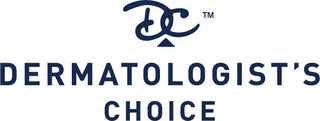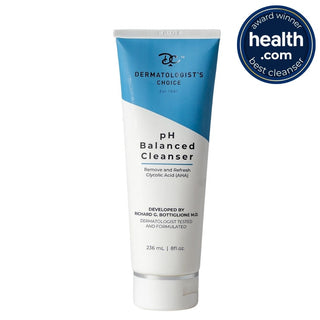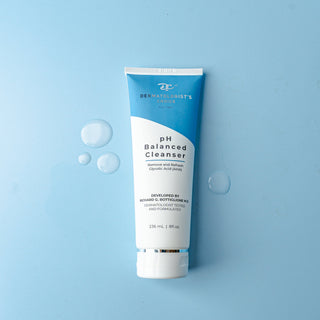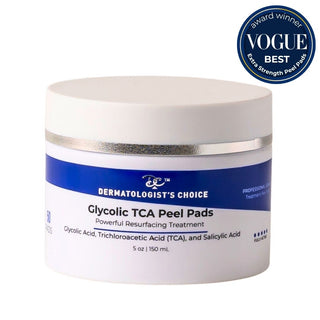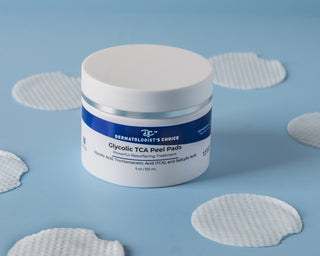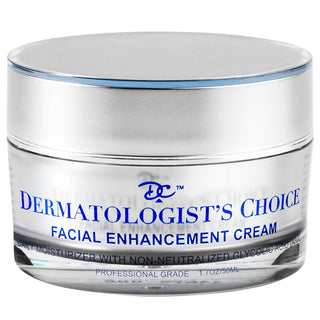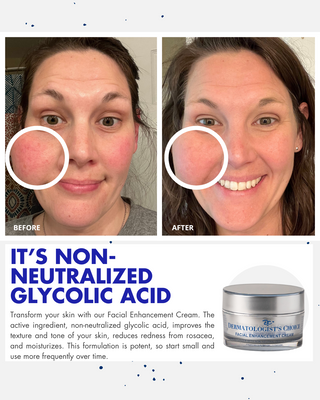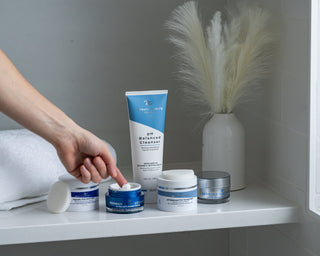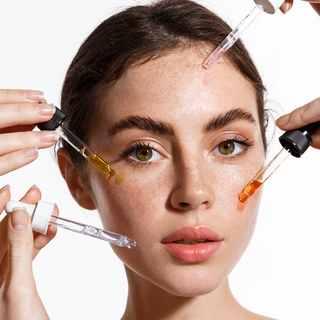Ever wonder how many skin concerns are out there? Well, we've come up with 26 of the most common. Here are some common skin concerns from A to Z with brief descriptions and the best treatment for each:
A - Acne: A skin condition characterized by the presence of pimples, blackheads, and whiteheads on the face, neck, back, and chest. Treatment options include topical or oral medications, such as retinoids, antibiotics, and benzoyl peroxide, and skincare routines that include oil-free and non-comedogenic products. Glycolic acid can be helpful in treating acne by exfoliating dead skin cells and unclogging pores.
B - Blemishes: Imperfections on the skin, such as dark spots, scars, and hyperpigmentation. Treatment options include skincare products that contain antioxidants, alpha hydroxy acids (AHAs), and vitamin C to brighten and even out the skin tone. Glycolic acid can be helpful in treating blemishes by exfoliating the skin and promoting cell turnover.
C - Crow's Feet: Fine lines and wrinkles that appear at the corners of the eyes. Treatment options include Botox injections, fillers, and topical retinoids. Skincare products that contain glycolic acid can also be helpful in reducing the appearance of crow's feet by promoting collagen production and smoothing out the skin.
D - Dry Skin: A common skin concern characterized by a lack of moisture, resulting in flakiness, tightness, and itching. Treatment options include using a moisturizer that contains humectants, emollients, and occlusives to hydrate and seal in moisture. Skincare products that contain glycolic acid can also be helpful in treating dry skin by exfoliating dead skin cells and allowing moisturizers to penetrate deeper into the skin.
E - Eczema: A skin condition characterized by dry, itchy, and inflamed patches of skin. Treatment options include topical steroids, moisturizers, and immunosuppressants. Skincare products that contain glycolic acid can also be helpful in treating eczema by exfoliating dead skin cells and reducing inflammation.
F - Fine Lines: Small lines that appear on the skin as a result of aging, sun exposure, and other environmental factors. Treatment options include Botox injections, fillers, and topical retinoids. Skincare products that contain glycolic acid can also be helpful in reducing the appearance of fine lines by promoting collagen production and smoothing out the skin.
G - Glowing Skin: A desirable skin condition characterized by a healthy, radiant, and dewy appearance. Treatment options include a skincare routine that includes gentle cleansers, toners, serums, and moisturizers that contain antioxidants, AHAs, and vitamin C to brighten and hydrate the skin. Skincare products that contain glycolic acid can also be helpful in promoting glowing skin by exfoliating dead skin cells and allowing other skincare products to penetrate deeper into the skin.
H - Hyperpigmentation: A common skin concern characterized by dark spots and uneven skin tone. Treatment options include skincare products that contain ingredients such as vitamin C, niacinamide, and hydroquinone to brighten and even out the skin tone. Glycolic acid can be helpful in treating hyperpigmentation by exfoliating the skin and promoting cell turnover.
I - Irritated Skin: A skin concern characterized by redness, itching, and inflammation. Treatment options include using gentle skincare products that are free of irritants and allergens, and using topical steroids and immunosuppressants in severe cases. Skincare products that contain glycolic acid can also be helpful in treating irritated skin by exfoliating dead skin cells and reducing inflammation.
J - Jowls: Sagging skin that appears along the jawline as a result of aging and gravity. Treatment options include fac
ial fillers, ultrasound therapy, and surgical procedures such as a facelift. Skincare products that contain glycolic acid can also be helpful in reducing the appearance of jowls by promoting collagen production and smoothing out the skin.
K - Keratosis Pilaris: A common skin condition characterized by small, rough bumps on the skin, typically on the upper arms, thighs, and buttocks. Treatment options include using gentle exfoliants, such as AHAs like glycolic acid, to soften and smooth the skin, and using moisturizers that contain ingredients such as urea and salicylic acid to hydrate and exfoliate the skin.
L - Large Pores: Pores that appear larger than normal, typically on the nose, forehead, and chin. Treatment options include using products that contain ingredients such as salicylic acid and retinoids to unclog pores and reduce their appearance, and using skincare products that contain glycolic acid to exfoliate the skin and promote cell turnover.
M - Melasma: A common skin concern characterized by dark, irregular patches of skin, typically on the face. Treatment options include using products that contain ingredients such as hydroquinone, kojic acid, and vitamin C to brighten and even out the skin tone, and using skincare products that contain glycolic acid to exfoliate the skin and promote cell turnover.
N - Nail Fungus: A fungal infection that affects the nails, causing them to become discolored, thickened, and brittle. Treatment options include using antifungal medications, either topical or oral, and using products that contain tea tree oil or other natural antifungal agents. Glycolic acid is not typically used to treat nail fungus.
O - Oily Skin: A common skin concern characterized by an overproduction of oil, resulting in shiny skin, clogged pores, and acne breakouts. Treatment options include using products that contain ingredients such as salicylic acid, benzoyl peroxide, and retinoids to unclog pores and reduce oil production, and using skincare products that contain glycolic acid to exfoliate the skin and promote cell turnover.
P - Psoriasis: A chronic skin condition characterized by red, scaly patches of skin that are often itchy and painful. Treatment options include using topical steroids, immunosuppressants, and light therapy, and using products that contain ingredients such as salicylic acid and coal tar to soften and reduce the appearance of scales. Glycolic acid is not typically used to treat psoriasis.
Q - Quality Skin: The overall appearance and health of the skin, including its texture, tone, and radiance. Treatment options include using a skincare routine that includes gentle cleansers, toners, serums, and moisturizers that are tailored to your specific skin concerns, and using skincare products that contain ingredients such as antioxidants, AHAs, and vitamin C to improve the quality of the skin. Glycolic acid can be helpful in improving the quality of the skin by exfoliating dead skin cells and promoting cell turnover.
R - Rosacea: A common skin concern characterized by redness, inflammation, and acne-like bumps on the face. Treatment options include using topical antibiotics, and light therapy, and using products that are gentle and free of irritants and allergens. Glycolic acid can help in combination with other ingredients used to treat rosacea.
S - Sagging Skin: Skin that appears loose and droopy, typically on the face and neck, as a result of aging and gravity. Treatment options include facia
l exercises, radiofrequency and ultrasound therapy, dermal fillers, and surgical procedures such as a facelift. Skincare products that contain glycolic acid can also be helpful in promoting collagen production and improving the texture and firmness of the skin.
T - Texture Issues: Skin that appears rough, bumpy, or uneven, typically as a result of acne, scarring, or sun damage. Treatment options include using products that contain ingredients such as retinoids, AHAs, and vitamin C to promote cell turnover and improve the texture of the skin, and using skincare products that contain glycolic acid to exfoliate the skin and smooth out rough patches.
U - Uneven Skin Tone: Skin that appears blotchy, discolored, or uneven, typically as a result of sun damage, acne, or hormonal changes. Treatment options include using products that contain ingredients such as hydroquinone, kojic acid, and vitamin C to brighten and even out the skin tone, and using skincare products that contain glycolic acid to exfoliate the skin and promote cell turnover.
V - Varicose Veins: Enlarged and swollen veins that appear blue or purple on the legs and feet. Treatment options include using compression stockings, sclerotherapy, and laser therapy to reduce the appearance of varicose veins. Glycolic acid is not typically used to treat varicose veins.
W - Wrinkles: Fine lines and wrinkles that appear on the skin as a result of aging, sun damage, and other environmental factors. Treatment options include using products that contain ingredients such as retinoids, peptides, and antioxidants to promote collagen production and improve the texture of the skin, and using skincare products that contain glycolic acid to exfoliate the skin and promote cell turnover.
X - Xerosis: A medical term for dry skin, characterized by rough, scaly, and itchy patches of skin. Treatment options include using products that contain ingredients such as urea, glycerin, and hyaluronic acid to hydrate and soften the skin, and using skincare products that contain glycolic acid to exfoliate the skin and promote cell turnover.
Y - Yeast Infections: Fungal infections that affect the skin, typically in warm and moist areas such as the groin and under the breasts. Treatment options include using antifungal medications, either topical or oral, and using products that contain natural antifungal agents such as tea tree oil. Glycolic acid is not typically used to treat yeast infections.
Z - Zits: Small, inflamed bumps on the skin, typically as a result of acne. Treatment options include using products that contain ingredients such as salicylic acid, benzoyl peroxide, and retinoids to unclog pores and reduce inflammation, and using skincare products that contain glycolic acid to exfoliate the skin and promote cell turnover.
